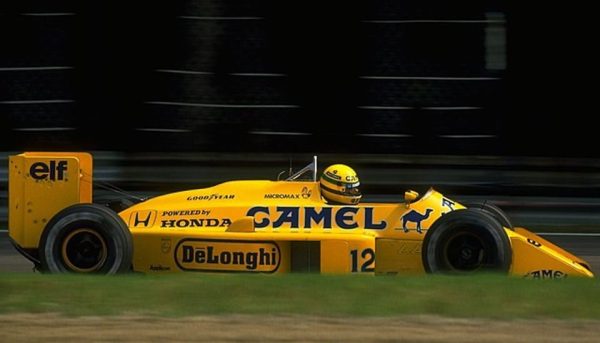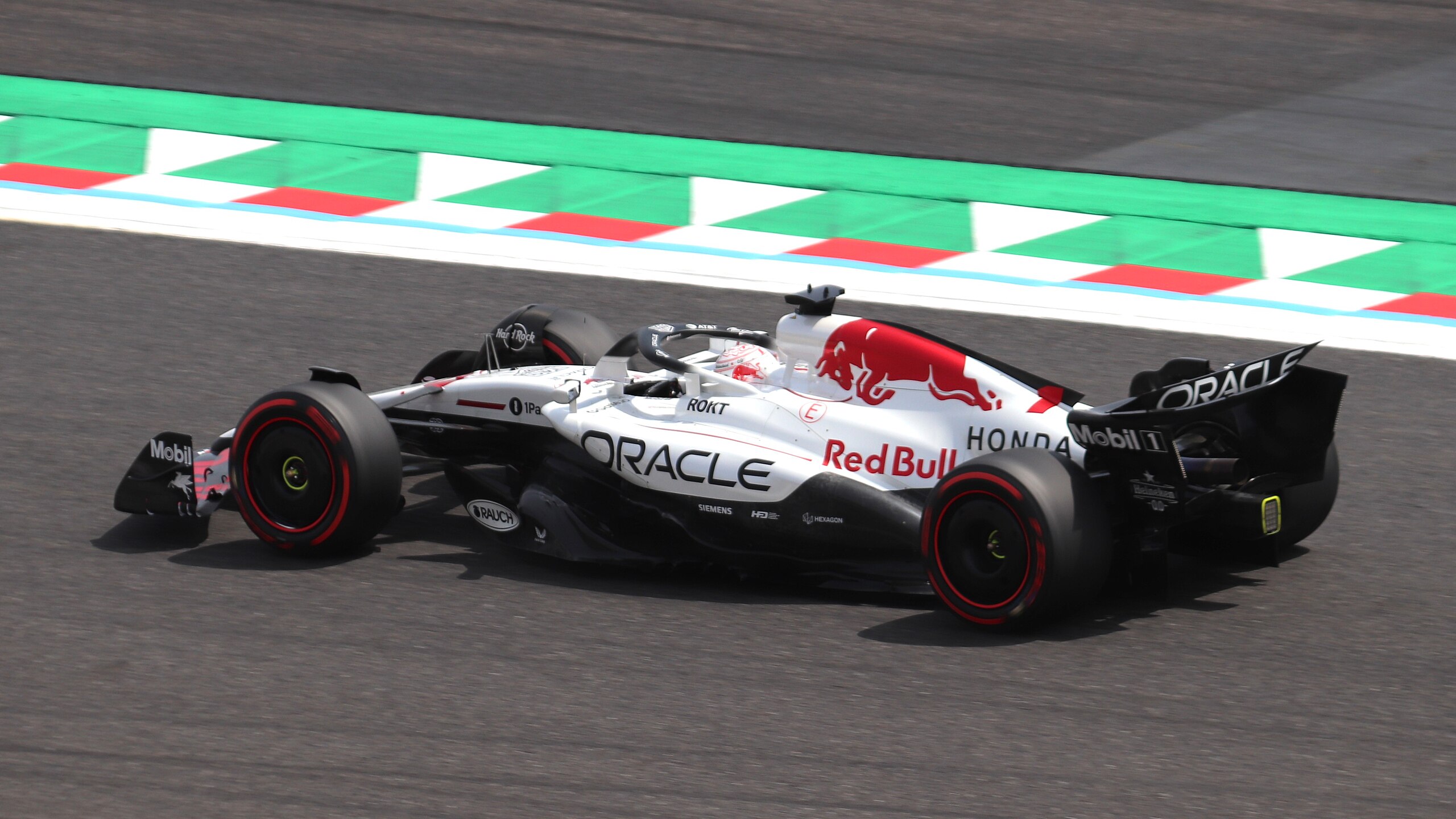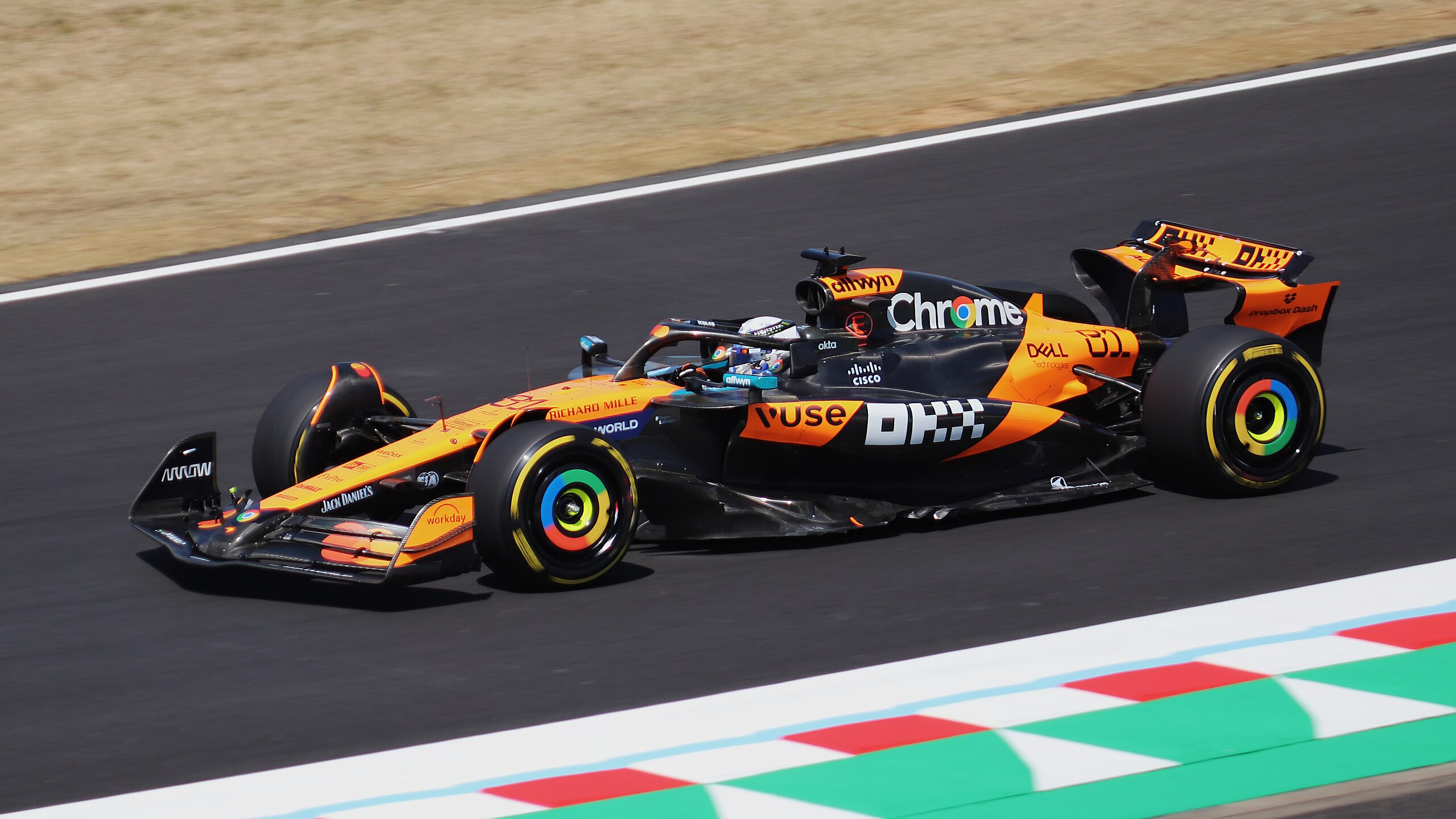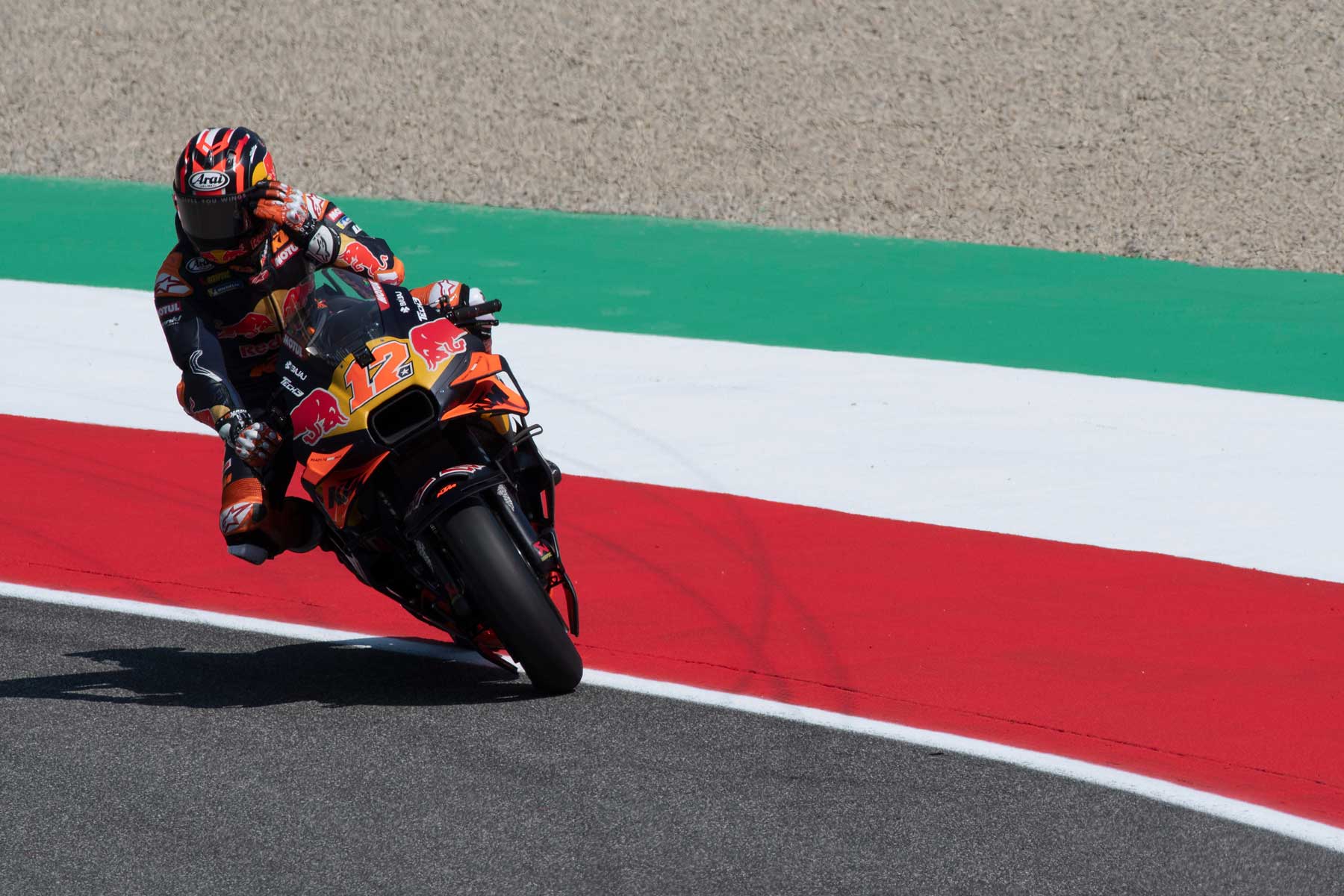Are you willing to sponsor?
Are you ready to explore the transformative power of athlete sponsorship for your brand? Click here to learn more about how sponsorship can help brands grow and thrive in the exciting world of motorsports.
By Riccardo Tafà| Posted January 1, 2023 | In Formula 1, Formula1
Senna’s quest for perfection made him one of the most celebrated Formula One driver in history, admired not only for his skill behind the wheel, but also for his character and unwavering commitment to a greater cause. Senna is remembered not only for being an outstanding driver capable of winning three Formula One World Championships in 1988, 1990 and 1991 but also for the charisma and intensity with which he approached his career on and off the tracks. An exceptional man who contributed greatly to the growth of Formula 1 in popularity the World.
Even today, Formula 1 enthusiasts who did not have the luck to watch him racing ask “how good was Ayrton Senna?” There is only a word: he was exceptional.
Ayrton Senna Da Silva was born on 21 March 1960 in Sao Paulo, in a wealthy Brazilian family. He is the son of industrialist Milton da Silva and his wife Neide Senna da Silva. Growing up, Ayrton received a privileged upbringing: his parents were affluent and could afford him the best education.
At the age of four, Ayrton received his first kart and soon his father built him a track at home to practise and hone his skills.
At the age of 13, Senna began participating in karting competitions in his native Brazil and quickly demonstrated his talent for the sport, winning his first championship just a year later.
Ayrton Senna scored wins and demonstrated great skill with karts and in 1977 won the South American Kart Championship and the Brazilian Kart Championship. He continued racing karts throughout his teens and into his twenties, winning several national and international championships.
His success in karting attracted the attention of several prominent figures in the racing world, including Emerson Fittipaldi, who took Senna under his wing and helped him secure a move to Formula Ford in Europe.
Senna’s early years in karting were very formative for his racing career. The skills he developed while competing in the highly competitive world of karting, such as precise car control, tactical decision-making and a deep understanding of racing lines, would serve him well throughout his Formula One career.
In addition, Senna’s experience in karting instilled in him a deep appreciation for the sport and a fierce determination to succeed, qualities that would help him become one of the greatest drivers in Formula One history.
After making a name for himself in karting, Ayrton Senna began his career in single-seater racing by participating in the British Formula Ford Championship in 1981. In his debut season, Senna secured the championship with a total of 12 victories and 14 pole positions, demonstrating his immense talent as a driver.
From there, Senna moved on to Formula 3, where he continued to dominate the competition. In 1983, he won the British Formula 3 championship ahead of Martin Brundle, once again demonstrating his incredible speed and driving skills.
Senna’s successes in Formula Ford and Formula 3 didn’t go unnoticed and attracted the attention of several Formula One teams.
In July 1983, Senna drove for Williams at the Donington Park circuit in England. In that test Ayrton Senna was reportedly quicker than the reigning World Champion Keke Rosberg during his test. Senna’s lap times were said to be consistently faster than Rosberg’s which impressed the Williams Team. However, despite his impressive performance, Senna was not offered a race seat with the team for the 1984 Season.
Later that year, in December 1983, Senna tested for McLaren at the Paul Ricard circuit in France. He again impressed with his speed and technical ability but again he did not receive an offer to drive for the Woking outfit.
In the end he was offered to drive the Toleman for the 1984 season.
Although Senna’s time in Formula Ford and Formula 3 was relatively short, it was instrumental in establishing him as one of the most promising young motorsport talents of the time. His performances in these series proved that he had the speed, skill and determination to succeed at the highest level of racing. He was a world champion in the making.
In addition, Senna’s success in these lower-level series allowed him to develop his driving style and refine his techniques, which would be crucial in helping him adapt to the high-speed, high-pressure environment of Formula One. Overall, Senna’s time in Formula Ford and Formula 3 laid the foundation for what would become one of the richest careers in motor racing history.

In 1984, Senna made his Formula One debut with the Toleman team. He immediately proved to be a force to be reckoned with, earning a fastest lap and three podium finishes in his rookie season. In 1984 Senna began to show what he was capable of in the rain, taking a controversial second place at Monaco with race director Jacky Ickx hastily suspending the race, according to some, while Senna was making up two seconds a lap to winner Alain Prost. Senna lost the race but gained immediate recognition as the new uprising star of the F1 world championship.
It was only the first in a series of controversial episodes that would later see Alain Prost and Ayrton Senna battle it out on tracks around the world, and it was also the first time Ayrton showed the world what magic he was capable of on the narrow streets of the principality.
In 1985, Senna joined the Lotus team and began to make a name for himself in F1.
He won two races,the first one being the Portuguese Grand Prix, he scored seven poles and went on to finish fourth in the championship.
In 1986, Senna finished 4th in the Championship and he managed to be 3rd 1n 1987.
Senna’s breakthrough season came in 1988, when he joined the McLaren team, where he teamed up with his main rival and teammate, Alain Prost. The two drivers dominated the season, winning fifteen of the sixteen races contested, and in the end Senna won the championship by three points over Prost.
In the following years, Senna and Prost continued their intense rivalry, with clashes both on and off the track. In 1989, Senna famously clashed with Prost at the Japanese Grand Prix, eliminating both drivers from the race and handing the championship to Prost. The following year, Senna and Prost clashed again in the same race, with Senna deliberately colliding with Prost and winning the championship.
To sum it up from 1998 to 1993 Ayrton Senna wins three times the Formula1 world championships (1998, 1990, 1991) and finishes second twice (1989, 1993)
Despite his often controversial tactics on the track, Senna was widely respected by his fellow drivers for his incredible speed, dedication and passion for racing. He was known for his ability to extract maximum performance from his car, especially in wet conditions, and was considered a master of the Monaco circuit, where he won six times.

The 1985 Portuguese Grand Prix, held at the Estoril circuit, was the sixth round of the 1985 Formula One World Championship. Ayrton Senna, then driving for the Lotus-Renault team, was considered one of the sport’s rising stars and was showing great promise in his second F1 season.
During qualifying, Senna put in an extraordinary performance by taking pole position, beating more experienced drivers like Alain Prost and Niki Lauda. In the race, Senna started well, but was soon overtaken by Michele Alboreto’s Ferrari. However, Senna did not give up and managed to pass Alboreto on lap five to retake the lead.
From then on, Senna was in total control of the race, setting a series of fast laps and pulling away from the rest of the pack. Despite a brief scare due to an engine failure, Senna managed to drive his car to the finish line and take his first Formula One victory.
Senna’s performance in the race was nothing short of spectacular. His qualifying lap was regarded by many as one of the greatest ever seen in Formula One, and his ability to dominate the race from the front was a sign of things to come. The victory also marked the beginning of a new era in Formula One, with Senna establishing himself as a serious title contender and one of the greatest drivers of all time.

Ayrton Senna’s performance at the 1993 European Grand Prix, held at Donington Park, is often regarded as one of the greatest driving spectacles in Formula One history.
The race took place in pouring rain and Senna, whose McLaren had an inferior horsepower, started in fourth position and quickly worked his way to the front of the pack, passing three drivers on the first lap alone. He continued to build up an impressive lead throughout the race, lapping all but second-placed Damon Hill.
Senna’s ability to race on the wet track with incredible speed and precision was nothing short of masterful, and his driving skills were put on display as he slid his car through the corners and performed daring overtaking manoeuvres.
At one point in the race, Senna set a lap time more than four seconds faster than anyone else on the circuit, a testament to his skill and courage in the treacherous conditions.
In the end, Senna won the race with an incredible time of 1 minute 23 seconds, cementing his place as one of the greatest drivers in Formula One history and earning him a well-deserved place in the pantheon of racing legends.
Tragically, Senna’s career came to a sudden and devastating end during the 1994 San Marino Grand Prix at the Imola circuit in Italy.
The entire race weekend was punctuated by serious accidents. During practice Roland Ratzenberger died in his Simtek and Rubens Barrichello, then a young up-and-comer driving a Jordan, had a very serious accident from which he miraculously emerged alive.
At the start, JJ Lehto’s Benetton gets stuck in the middle of the track and Pedro Lamy hits it, a tyre flies into the grandstand and there are numerous injuried… safety car on the track and F1 cars swaying to keep the tyres warm until the restart. The rest is history. San Marino will always be remembered for the “accident”.
During the race, Senna’s car,closely followed by Michael Schumacher, crashed at high speed into a concrete wall, sustaining fatal head injuries. The accident shocked the motor racing world and led to significant changes in Formula One’s safety regulations.
Despite his untimely death, Senna’s legacy continues to be that of one of the greatest drivers in history. His incredible talent, fierce determination and passion for racing inspired generations of drivers and his memory is still cherished by fans around the world.
Senna’s charitable work and devotion to his faith also left a lasting impact; he founded the Instituto Ayrton Senna, a non-profit foundation dedicated to providing educational resources to Brazilian children, which helped raise living standards and educational opportunities in his country. His tireless work with the foundation is a lasting testimony to the man, his legacy and the work he and his team have done to help the Brazilian people.
In conclusion, Ayrton Senna’s impact on Formula One and the world of motorsport is immeasurable. He was a truly unique and gifted talent, who pushed himself and his car to the absolute limit in pursuit of victory. His legacy as a driver, humanitarian and spiritual figure will continue to inspire and influence people for generations to come, ensuring that his legend lives on for F1 fans. To me, Senna was the most talented racing driver I ever saw on a racing track.
Pictures, top to bottom:
-The Lotus 99T of Ayrton Senna used in the 1987 Formula One season, Dima Moroz, Creative Commons Attribution 2.0
- Ayrton Senna in 1988, Instituto Ayrton Senna, Creative Commons Attribution 2.0
- The Lotus 97T of Ayrton Senna used in the 1985 Formula One season, Dima Moroz, Creative Commons Attribution 2.0
Are you ready to explore the transformative power of athlete sponsorship for your brand? Click here to learn more about how sponsorship can help brands grow and thrive in the exciting world of motorsports.

Managing Director for RTR Sports, Riccardo graduated in law at the University of Bologna. He began his career in London in PR, then started working in two and four-wheelers. A brief move to Monaco followed before returning to Italy. There he founded RTR, first a consulting firm and then a sports marketing company which, eventually, he moved back to London.
The online platform where you can discover the latest trends, strategies and insights from the exciting world of sports marketing.
View our blog
July 4, 2025
When, in 1950, the Formula 1 kicked off at Silverstone, no one could have predicted that, 75 years later, it would become much more than a sport. Today, F1 is a global phenomenon, a cultural,[...]
Read More
July 1, 2025
In the complex and exciting world of Formula 1, performance no longer belongs exclusively to wind tunnels and race strategies. It also unfolds in boardrooms, brand labs, and experiential mark[...]
Read More
June 26, 2025
This content is password protected. To view it please enter your password below: Password: [...]
Read MoreIn an era where it is possible to get anywhere with a click, there is a strong temptation to approach teams and properties directly for sponsorship projects.
By doing so, we are convinced that we are shortening the value chain, saving time and money. However, these DYI methods are anything but risk-free and what initially appears to be a competitive advantage soon turns into a problem that is difficult to resolve. That’s why there are agencies. And this is why you should rely on us for your sponsorships.
When first approaching a sponsorship or sports marketing project, it is difficult to know immediately which stakeholders are correct, what the decision flow is, and what the right timelines are for each process. Sports is a very specialized field of action, and fitting effectively into its paths can take a lot of time and therefore money. We, on the other hand, know referents and spheres of action and know who to talk to, when and how. So you are also more effective.
Sports is an immense passion, and for our heart colors we would be willing to do anything. But business is a different business, and it is important to make the best possible strategic decisions based on independent research, statistics and reliable data. A sports marketing and sports sponsorship agency like RTR has an objective, 360-degree picture of the scenario and can tell you what is really best for you: which sport, which athlete, which team. This is because we possess a great deal of data and information on ratings, segmentation and attitudes. Because the numbers don’t lie. Never.
Activations are the real heart of sports sponsorship. Without them, there remains only a blank sticker on a motorcycle, car or uniform and no contact with the public, no emotional connection, no impact on the bottom line. Then how do you do it? It certainly won’t be the teams or the athletes who will help you leverage sponsorship and enjoy the many marketing rights you have paid for. To bring out the best in a sports marketing project you need an agency that knows how to use sponsorship to engage the fanbase on the Web, to reach out to Shopping Centers, to organize hospitality, to develop B2B and B2C opportunities, and to get “your” athletes in front of millions of potential consumers.
Would you ever go to the dealer who sold you the car and ask if the competitor’s car is better? No, of course. So, how do you expect to get firm measurements of the effectiveness of your sponsorship if you do not rely on someone super partes? At RTR, we have always worked with independent third-party agencies that allow us to know the return on any exposure of your brand on TV and in the media. In addition, we believe in calculating ROI as the ultimate measure of your success-so we can tell you for every penny you spend how much you are making.
We have been involved in sports sponsorship and sports marketing for more than 15 years. We are consultants in the sense that our goal is to maximize your investment, but we are also an agency that manages the project from start to finish. We have been doing this since 1995 with passion and professionalism, following three principles that have become cornerstones of our business: independence, verticality and transparency.
I would like to highlight the fact that one of the qualities of RTR is its great ability to approach the sponsorship scenario strategically, together with its passionate attitude, its amazing enthusiasm for solving problems, and its high level of professionalism.
Gianluca Degliesposti
Executive Director Server&Storage EMEA
Eurosport is truly delighted with its business relationship with Riccardo Tafà, who has become extremely popular, thanks to his detailed knowledge of the sports marketing sector and his highly diligent attitude to work.
Francois Ribeiro
Commercial Director
Passion and Expertise are the features that I have found in RTR since the very beginning. Serious and reliable professionals but also very helpful, nice and open-mind people, willing to listen and compare different ideas. All the values in which RTR believes make this agency a partner, not just a supplier, a partner with whom we have had the opportunity to achieve significant commercial results in term of success and image.
Luca Pacitto
Head of Communication
We have been working with RTR Sports Marketing for over 10 years. The objectives and the programmes of collaboration continue to be renewed and to grow with mutual satisfaction. I believe RTR is a team of great professionals led by Riccardo Tafà, who I consider a manager of exceptional skills and with a great passion for his work.
Lucio Cecchinello
Team Principal
I have known and worked with Riccardo Tafà since 1995 when we collaborated for the first time on a project for the Williams Formula 1 team. Several clients followed. After leaving Williams to work for Gerhard Berger then owner of the Toro Rosso F1 Team, I turned again to Riccardo to seek his help in finding a tool supplier for the team and Riccardo duly obliged with an introduction to USAG, a partnership with Toro Rosso which endured for five years. I recently started a new role as Group Commercial Director for the renowned Andretti Autosport organisation and I find myself working with Riccardo once again on a number of interesting projects. Why has this relationship with Riccardo endured ? He’s smart, knows the commercial side of sport inside out and back to front and he’s honest and trustworthy. Riccardo Tafà is a “doer” not a “talker”: in over 20 years I have never had a dispute either with him or with a company that he has introduced and each partnership introduced by Riccardo has delivered quantifiable ROI to rights holder and sponsor alike. I can think of no better testimonial of Riccardo’s diligence, knowledge, contact base and hard work than that.
Jim Wright
Group Commercial Director
The online platform where you can discover the latest trends, strategies and insights from the exciting world of sports marketing.
View our blog
July 4, 2025
When, in 1950, the Formula 1 kicked off at Silverstone, no one could have predicted that, 75 years later, it would become much more than a sport. Today, F1 is a global phenomenon, a cultural,[...]
Read More
July 1, 2025
In the complex and exciting world of Formula 1, performance no longer belongs exclusively to wind tunnels and race strategies. It also unfolds in boardrooms, brand labs, and experiential mark[...]
Read More
June 26, 2025
The European Commission has provided Liberty Media Corporation with unconditional approval to complete the acquisition of the MotoGP World Championship. The process of annexing the top motorc[...]
Read More